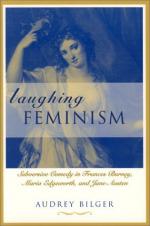|
This section contains 13,415 words (approx. 45 pages at 300 words per page) |

|
SOURCE: "Representation, Conversion, and Literary Form: Harrington and the Novel of Jewish Identity," Critical Inquiry, Vol. 16, No. 1, Autumn, 1989, pp. 113-43.
In the following essay, Ragussis examines Harrington in the course of an inquiry into the origin and role of Jewish stereotypes in English literature.
In 1817 Maria Edgeworth published Harrington as an act of personal "atonement" and "reparation." The year before she had received a letter from Rachel Mordecai, an American Jew who wrote to complain of an anti-Semitic portrait in The Absentee (1812). In this local and personal incident between a Christian author and a Jewish reader, the shape of an important tradition of English literature was radically altered. Edgeworth was not the first to give us Jewish portraits in the novel (Daniel Defore and Samuel Richardson had already done that), nor was she the first to give us sympathetic Jewish portraits (Richard Cumberland had already done that for...
|
This section contains 13,415 words (approx. 45 pages at 300 words per page) |

|


